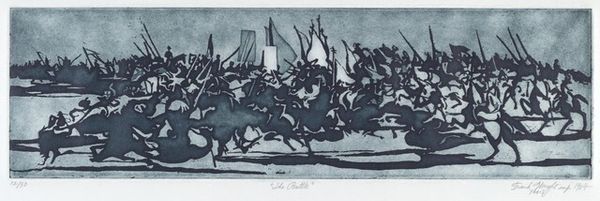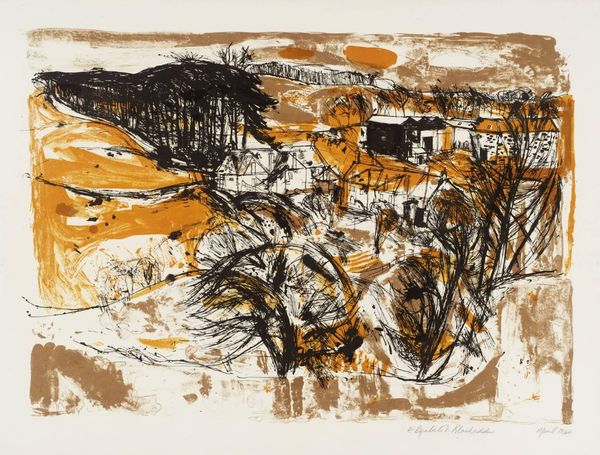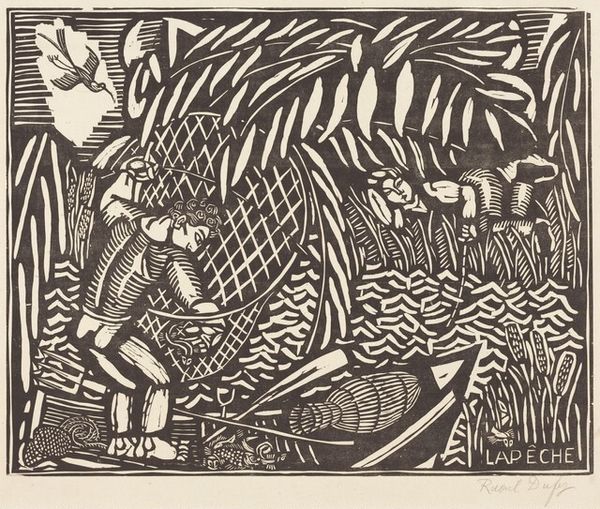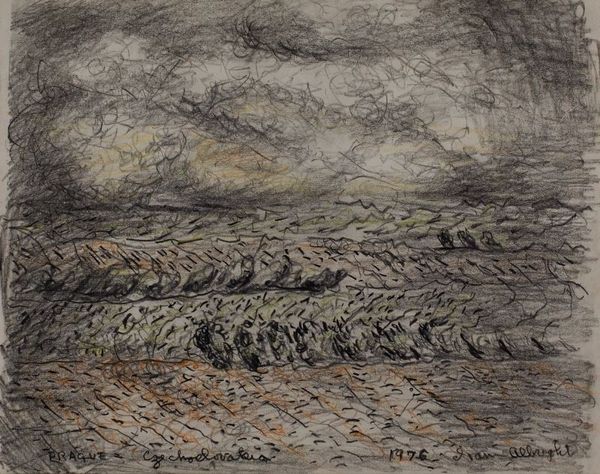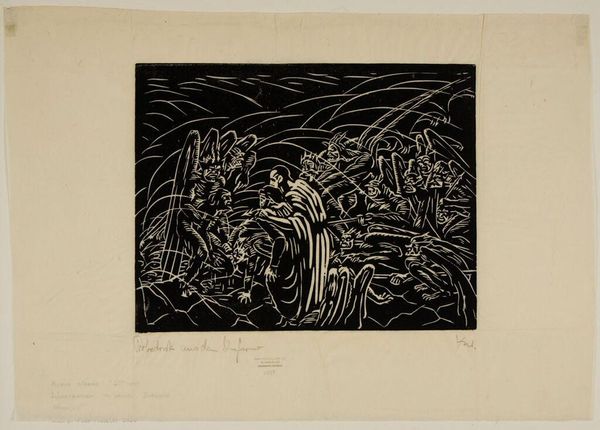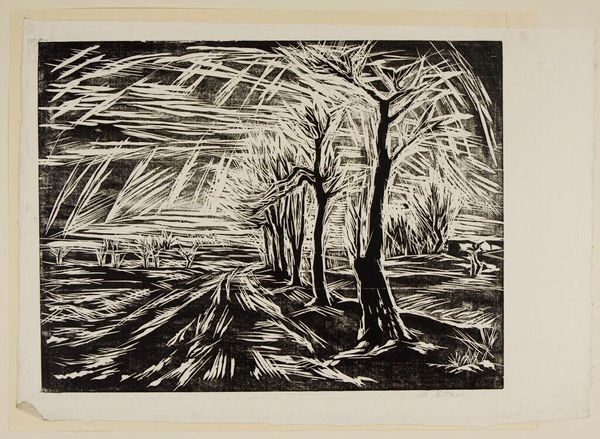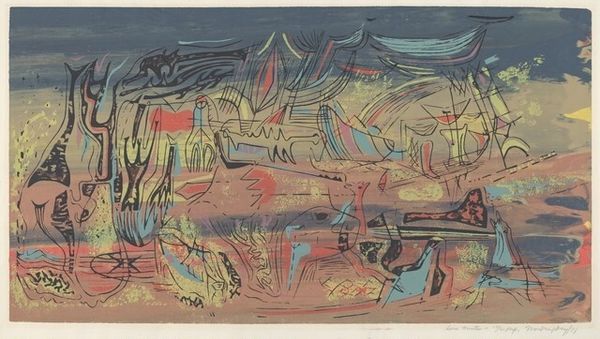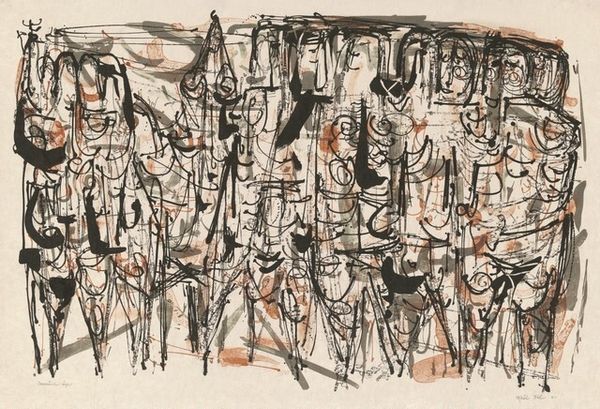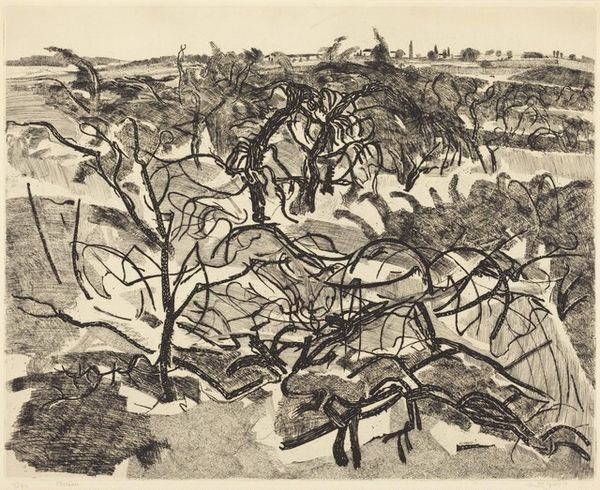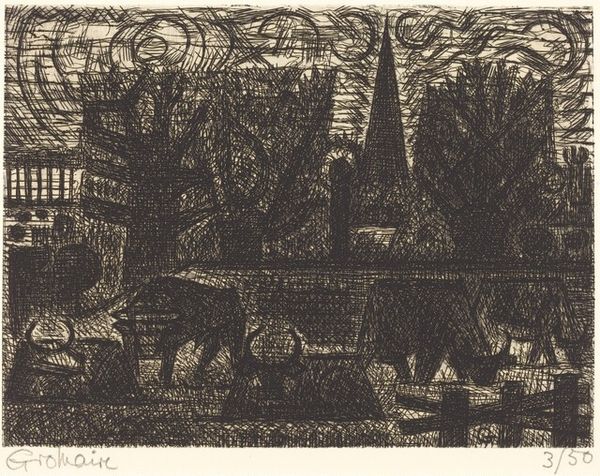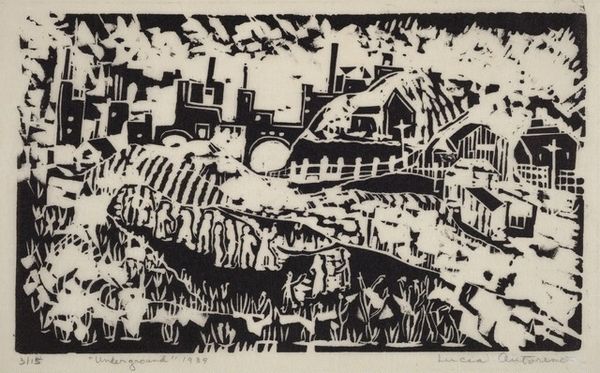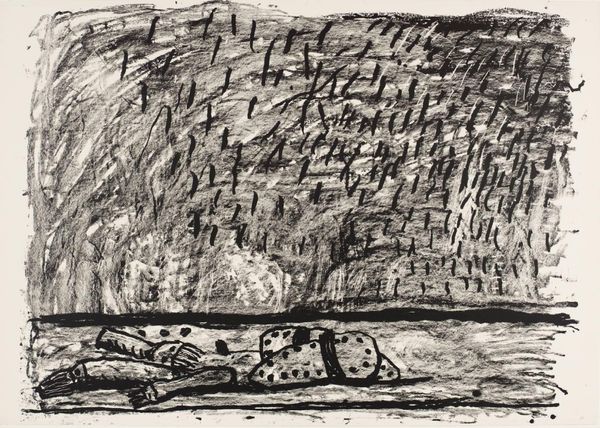
print, woodcut
# print
#
landscape
#
woodcut
#
line
#
cityscape
Copyright: National Gallery of Art: CC0 1.0
Curator: Rudy Pozzatti’s woodcut, "Sun over Venice," created in 1961, presents a compelling take on the cityscape genre. Editor: It has a somber mood. The stark lines and somewhat muddy colors suggest a city grappling with its own decay, yet it also has an intrinsic aesthetic appeal based on the materials and techniques involved. Curator: Indeed. Pozzatti's choice of the woodcut medium is quite deliberate. It brings a certain raw texture and immediate visual impact. The bold cuts and grain of the wood create this roughness. One has to wonder: what were the particular tools he used, what type of wood, how many impressions of the woodblock were possible before the form began to decay? Editor: The cityscape itself also becomes something beyond a pretty picture. You can sense the cultural and institutional presence of Venice itself pressing down. This romantic yet imposing city has been interpreted and consumed over centuries. Curator: Right, and look how Pozzatti subverts expectations. The red "sun," rather than providing warmth, seems almost like an industrial fire. Is he commenting on the changing economy and function of Venice itself through these contrasts? Editor: Possibly, considering the socio-political climate of 1961. Post-war anxieties mingled with emerging modern industries certainly impacted how cities presented themselves—or were presented by artists. The consumption of 'place' has always played a key role in global economics. Curator: And how the printmaking process itself allows for a mass production of imagery. What does that imply regarding the availability of these Venetian 'views' to audiences who perhaps could never visit, for example? Editor: Exactly, the dissemination changes everything. Even a 'unique' woodcut becomes a repeatable experience—reshaping the reception and therefore the understanding of a location, Venice. Curator: Seeing Venice transformed in this way, through this medium, at this historical juncture... it really forces you to consider how an artist's technical choices reflect wider cultural shifts. Editor: Ultimately, art and the making of art serve to define and shape societal experiences. They really work together.
Comments
No comments
Be the first to comment and join the conversation on the ultimate creative platform.
